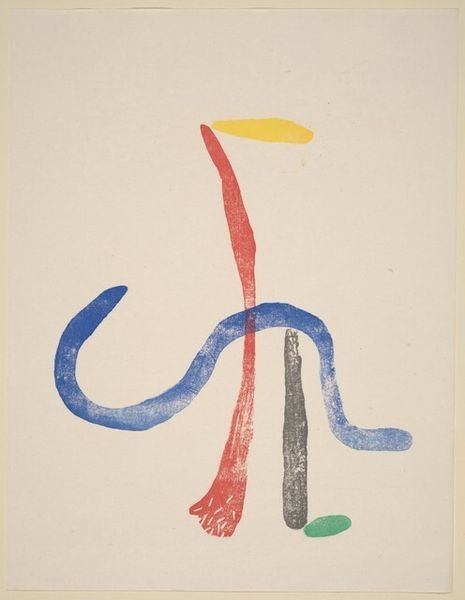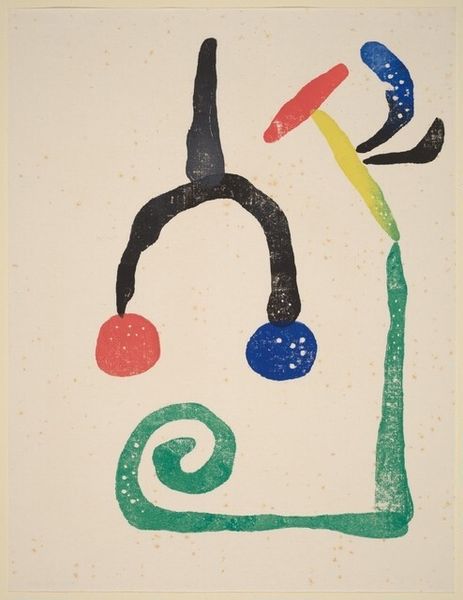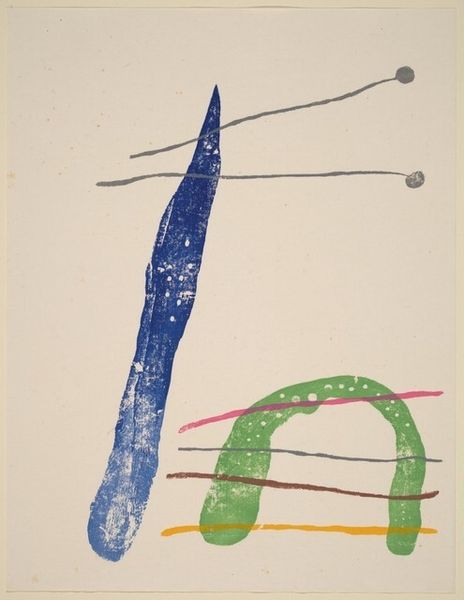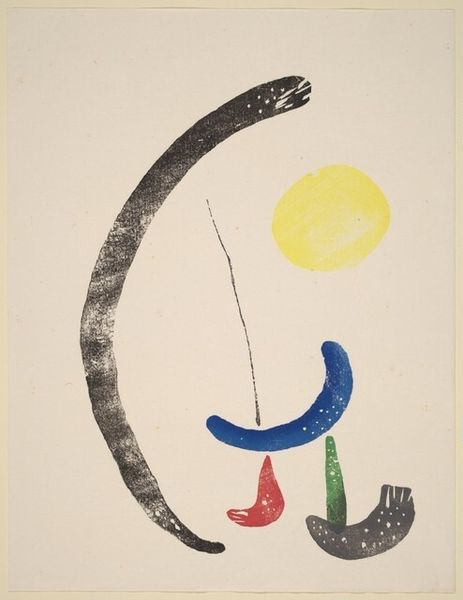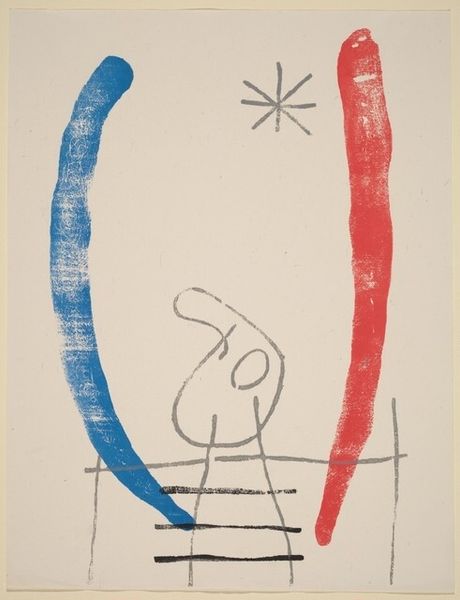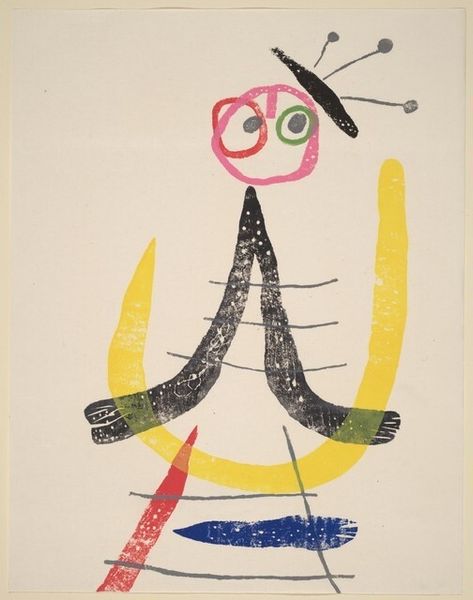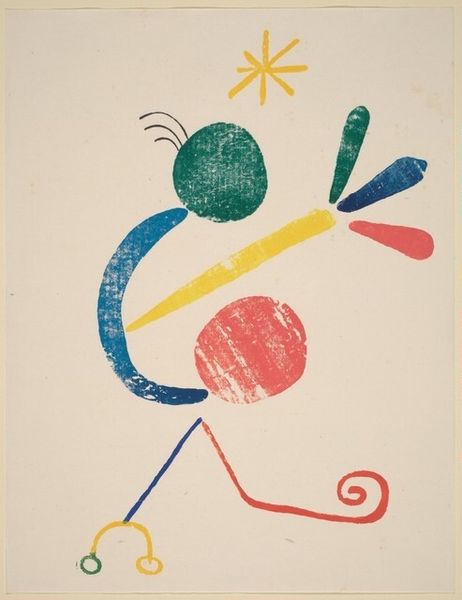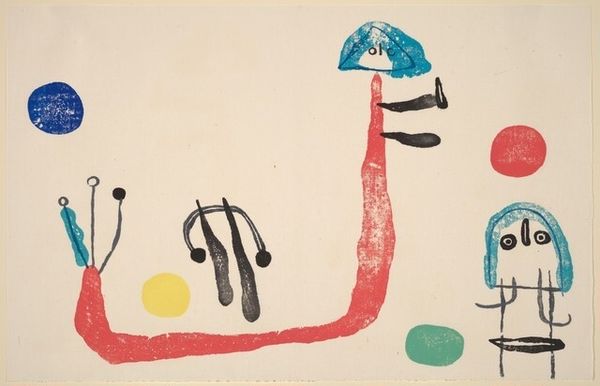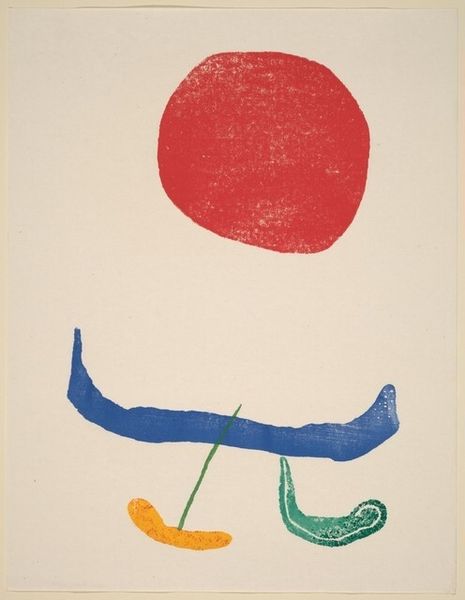![Untitled [plate XXXVI] by Joan Miró](/_next/image?url=https%3A%2F%2Fd2w8kbdekdi1gv.cloudfront.net%2FeyJidWNrZXQiOiAiYXJ0ZXJhLWltYWdlcy1idWNrZXQiLCAia2V5IjogImFydHdvcmtzLzIyMzYyY2I2LTdjM2YtNDMwZC1iYTgzLTMxYjE5OTJlYjc0MS8yMjM2MmNiNi03YzNmLTQzMGQtYmE4My0zMWIxOTkyZWI3NDFfZnVsbC5qcGciLCAiZWRpdHMiOiB7InJlc2l6ZSI6IHsid2lkdGgiOiAxOTIwLCAiaGVpZ2h0IjogMTkyMCwgImZpdCI6ICJpbnNpZGUifX19&w=1080&q=75)
Copyright: National Gallery of Art: CC0 1.0
Joan Miró made this untitled print using color lithography, a process that involves drawing on a stone or metal plate and then using oil-based inks to transfer the image onto paper. The medium is crucial here. Lithography allows for the creation of flat, graphic shapes with distinct edges, seen in the bold black lines and vibrant colors. Look closely, and you'll notice how the ink sits on the surface of the paper, creating a tactile quality. The process encourages spontaneity, and allows Miró to play with abstraction, while still emphasizing the handmade quality of the print. The flat areas of color and simplified forms almost resemble stencils or cut-outs, which lends the work a playful, improvisational feel. Miró's lithographs were often produced in editions, making his art accessible to a wider audience, and challenging the traditional hierarchy between fine art and commercial production. By embracing printmaking, Miró blurred the lines between unique artwork and mass-produced object.
Comments
No comments
Be the first to comment and join the conversation on the ultimate creative platform.
